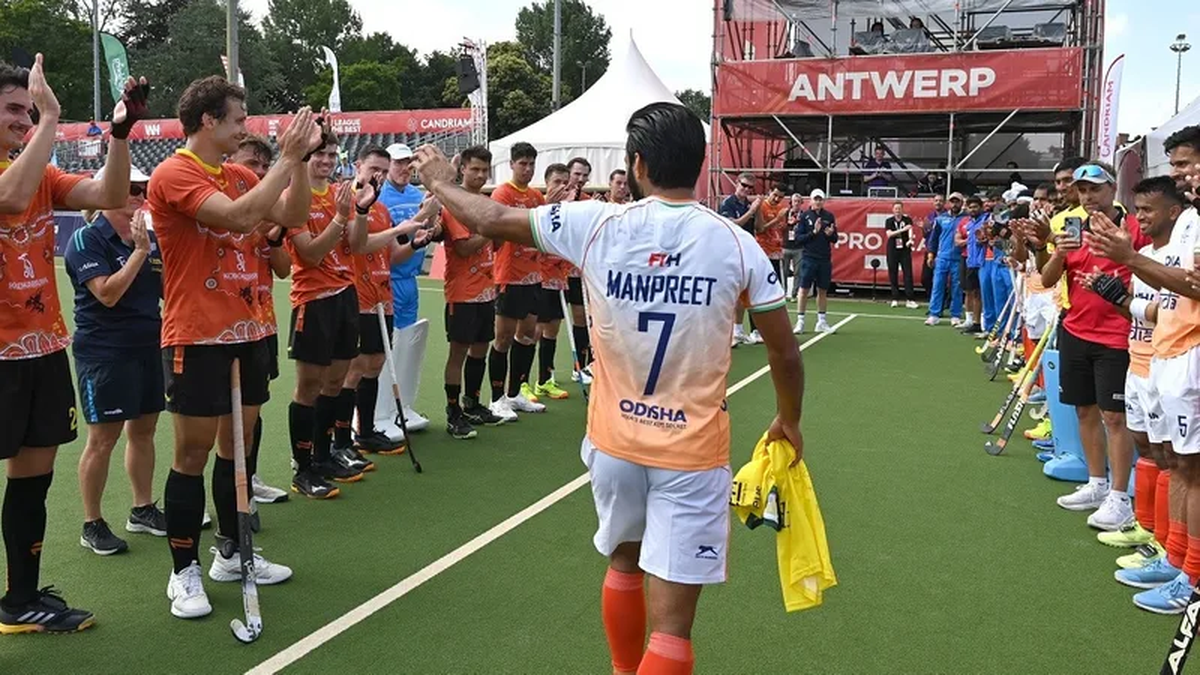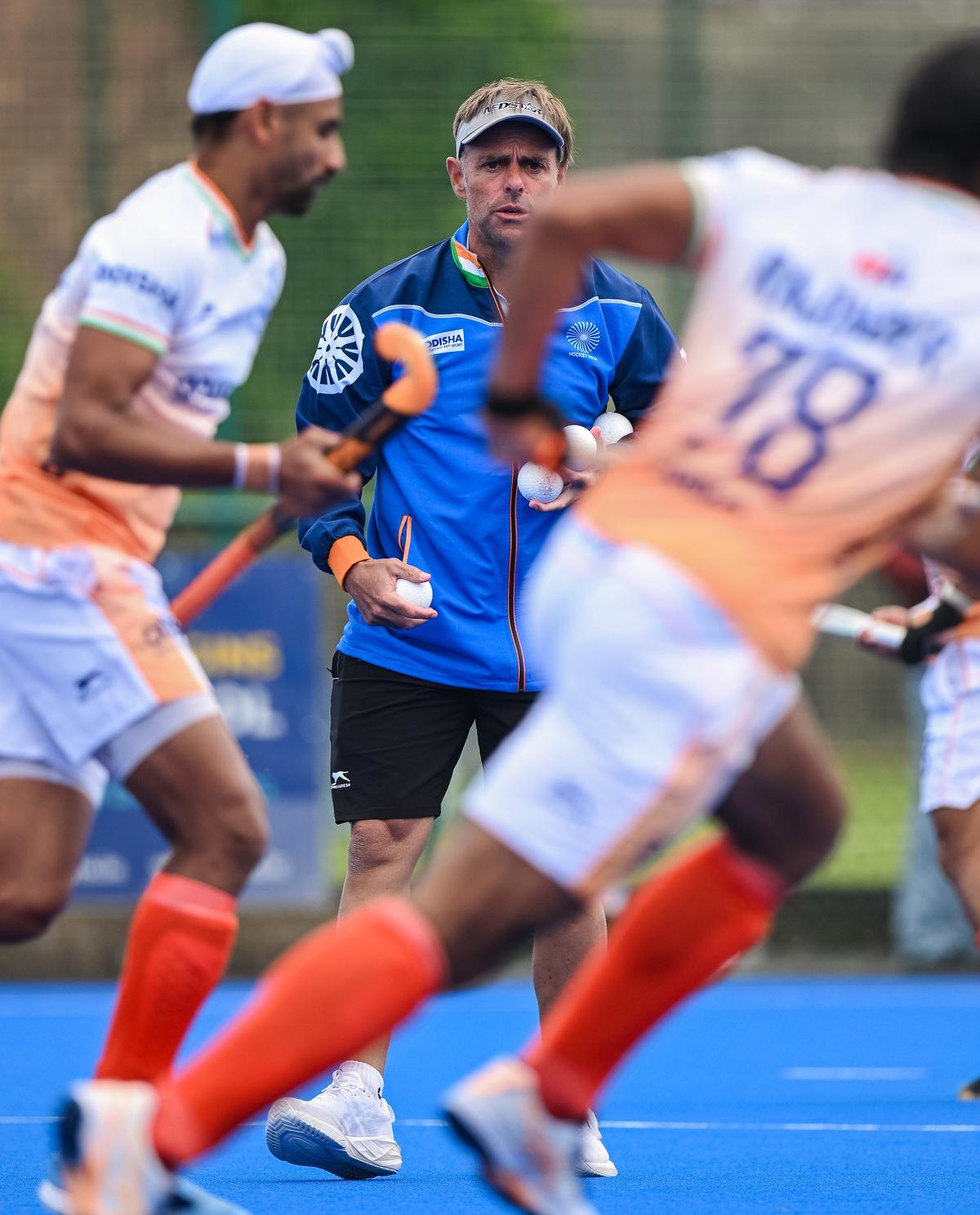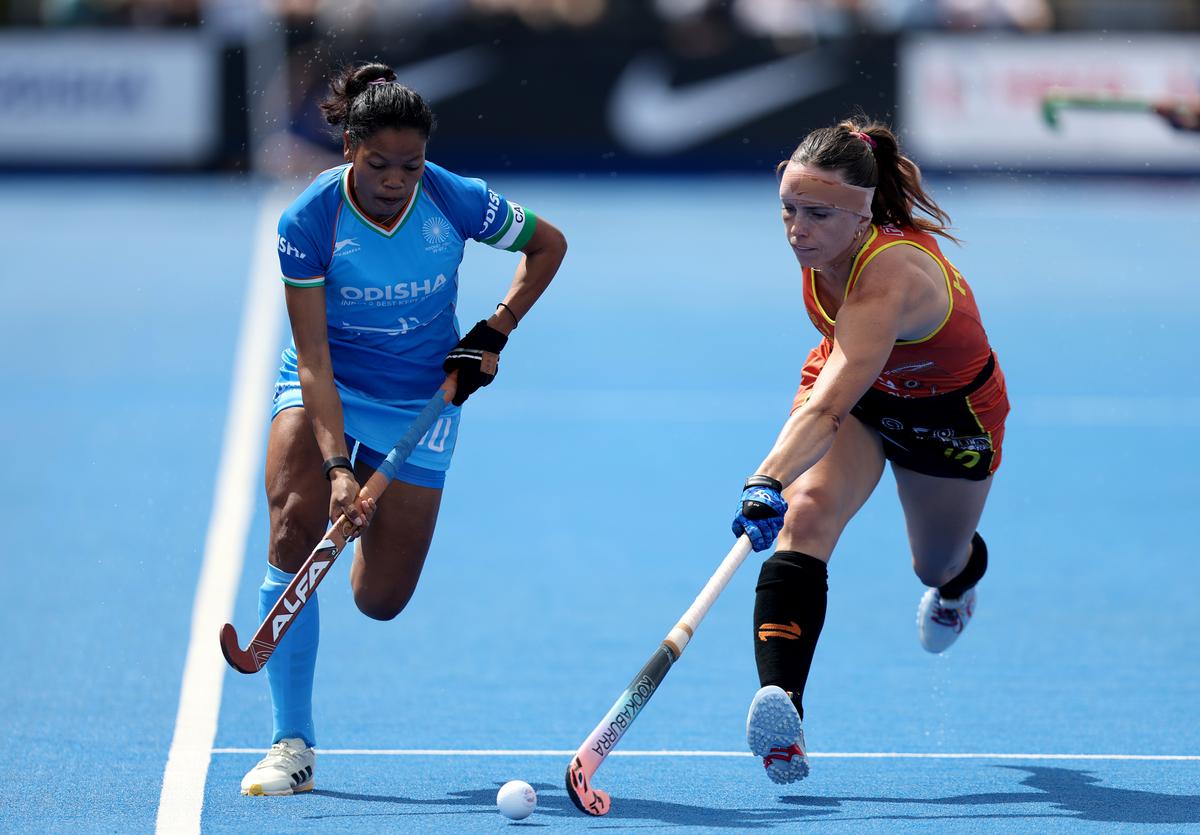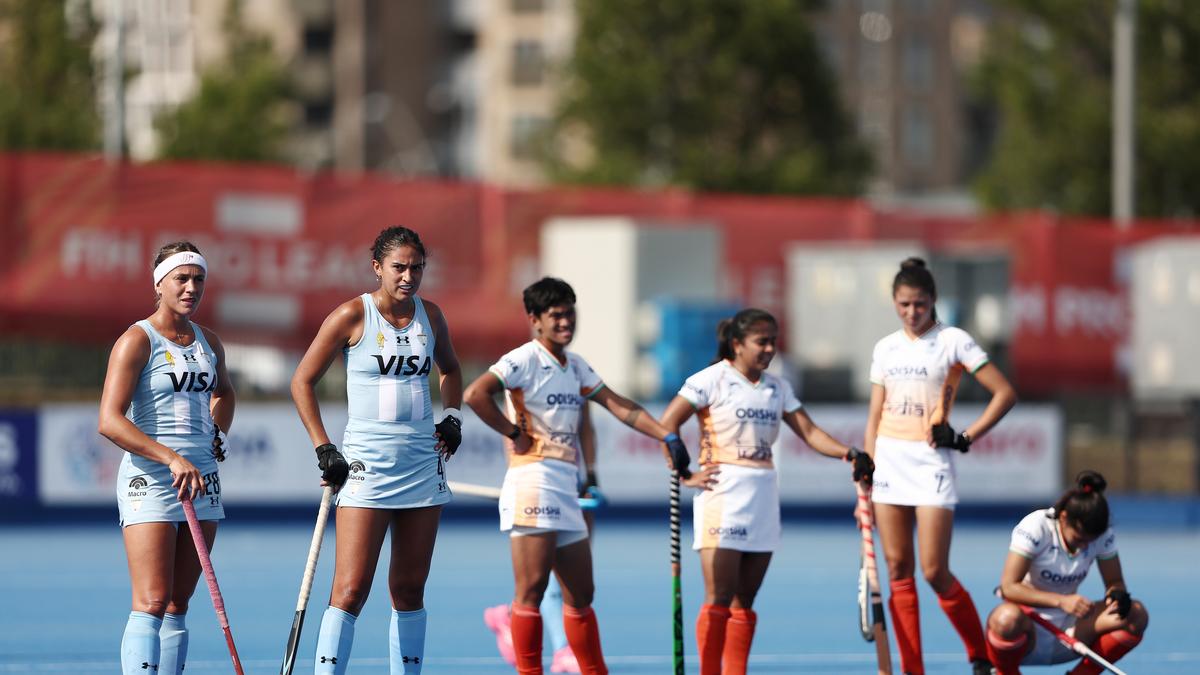Pro League exits expose deeper woes in Indian hockey
A month is a long time in sport. Before the men and women left for the European leg of the FIH Pro League 2024–25, Indian hockey appeared to be on the right track for the bigger, tougher challenges looming over the next 18 months. By the time they wrapped up a forgettable tour, however, both players and coaches were left grappling with more questions than answers.
The men, who were third with 15 points after the first round of eight home games in Bhubaneswar, managed to add just three more during their final European stretch to finish eighth in the nine-team competition. They endured the ignominy of a record seven-match losing streak, falling from title contenders to a side simply relieved to retain its place in the top tier — thanks more to Ireland’s woes than its own success.
The women weren’t so fortunate. Having earned promotion from the Nations Cup — the second tier of the Pro League — two seasons ago, the team finished bottom and was relegated, replaced by New Zealand, this year’s Nations Cup winner. With just two outright wins, and another from a shootout, India ended with 10 points. The relegation is embarrassing, but it also signals deeper concerns for the team than just a loss of prestige.
Close, but not close enough
Despite similar outcomes, the men are in a better position — both in terms of their shortcomings and the avenues available to address them. Barring a couple of games, they were never entirely outplayed. Six of their seven defeats came by a single goal, five of those in the final quarter. The team remained in the contest throughout but paid the price for a combination of erratic defending and poor decision-making in attack.
The tour began on the back foot: several squad members were unable to travel to Ireland for practice games due to visa issues. Injuries to Gurjant Singh and captain Harmanpreet Singh further compounded problems. Coach Craig Fulton’s “defend-to-attack” philosophy — which relies on a robust backline and elite fitness to transition quickly — was undermined by defensive lapses. India conceded 26 goals across eight games, with slack clearances, ill-timed tackles and poor positioning proving costly.

Isolated impact: Abhishek emerged as India’s standout performer in the Pro League with four goals, but his tendency to hold onto the ball too long inside the circle often allowed defenders to recover and shut down scoring opportunities.
| Photo Credit:
AP
Isolated impact: Abhishek emerged as India’s standout performer in the Pro League with four goals, but his tendency to hold onto the ball too long inside the circle often allowed defenders to recover and shut down scoring opportunities.
| Photo Credit:
AP
There was no dearth of experience — Amit Rohidas, Sumit, Jugraj Singh, Jarmanpreet Singh, Sanjay, and Harmanpreet — yet the group failed to play to potential. Turnovers were frequent, and the basics seemed to have been forgotten, exposing a gap no strategic planning could paper over.
Goalkeeper Krishan Pathak had a tournament to forget, especially when dealing with aerial balls — a weakness the taller European teams exploited with ease. Suraj Karkera fared no better. Together, the duo made the absence of PR Sreejesh more glaring than ever.
Selection conundrum
Up front, Abhishek emerged as India’s standout player, scoring four goals. Yet even he was guilty of holding onto the ball too long inside the circle, allowing defenders to regroup. His shot selection and angles saved him more than once, but simplicity could have been more effective.
The rest of the attack was underwhelming. Mandeep Singh was used sparingly, Lalit Upadhyay (who has since retired) and Sukhjeet Singh were off-target, Dilpreet Singh looked unsure on the ball, and Shilanand Lakra lacked tenacity.
While Hockey India League and junior-level performers are waiting in the wings, Fulton has indicated that he does not intend to make wholesale changes until after the Junior World Cup later this year. Araijeet Singh Hundal, Boby Singh Dhami, Arshdeep Singh, Mohammed Raheel, and Selvam Karthi are all options — but the coach must soon decide whether to persist with the current group for the Asia Cup or accelerate the transition.

Veteran resolve: Midfielder Manpreet Singh, now the second Indian to cross 400 international appearances, continued to set the standard with his tireless work rate and versatility, emerging as one of the few steadying forces in a turbulent Pro League campaign.
| Photo Credit:
FIH
Veteran resolve: Midfielder Manpreet Singh, now the second Indian to cross 400 international appearances, continued to set the standard with his tireless work rate and versatility, emerging as one of the few steadying forces in a turbulent Pro League campaign.
| Photo Credit:
FIH
Penalty corner routines also need revisiting. In Harmanpreet’s absence, India lacked a reliable drag-flicker. Rohidas was the next best; Jugraj continued his goalless streak and even missed a penalty stroke, Sanjay was ineffective, and Nilam Xess was barely tried. With set-pieces playing such a decisive role in modern hockey, this shortcoming is critical.
Two players who did enhance their reputations were Manpreet Singh and Hardik Singh. Manpreet, the second Indian to earn 400 international caps, continued to set high standards of fitness and work rate. Hardik, meanwhile, remains the team’s heartbeat. Together, they played key roles in salvaging pride — if not points — during a grim tour.
If one were to play Devil’s Advocate, the men endured a similarly dismal Pro League campaign in 2023–24 — five wins and six draws en route to a seventh-place finish — yet bounced back to retain their Olympic bronze in Paris. In that sense, this latest failure could be well-timed, giving Fulton space to rethink strategies and personnel ahead of a crucial year.
The Asia Cup, at home in two months, offers India its best chance to qualify for the World Cup. If they make it, Fulton and his squad will have a year to fine-tune plans — with the Asian Games also looming shortly after.

Broken transitions: Coach Craig Fulton’s “defend-to-attack” philosophy — built on a solid backline and high fitness levels to enable quick transitions — was exposed in Europe as repeated defensive lapses cost India crucial moments and matches.
| Photo Credit:
Getty Images
Broken transitions: Coach Craig Fulton’s “defend-to-attack” philosophy — built on a solid backline and high fitness levels to enable quick transitions — was exposed in Europe as repeated defensive lapses cost India crucial moments and matches.
| Photo Credit:
Getty Images
Back to the drawing board
For the women, the road ahead is murkier. With just two wins from 16 matches and a paltry 10 points, the team finds itself on a worrying downward spiral — with few signs of an imminent turnaround.
Having missed out on the Paris Olympics, India was expected to rebuild. While the India leg of the Pro League hinted at promise, the European leg quickly crushed such optimism. Last year’s Asian Champions Trophy triumph, too, now feels hollow — most opponents, including China, Japan and Korea had fielded inexperienced squads.
India’s tour of Australia yielded just one win in five games. And despite coach Harendra Singh’s emphasis on fitness, the team could not match higher-ranked sides across London, Antwerp, and Berlin the way it had in Bhubaneswar.
Penalty corner defence remained India’s Achilles heel. Belgium, Argentina, Australia, China — all feasted on a fragile backline. A 3-0 loss to China in the penultimate match — with two PC goals — effectively sealed its fate. Even winning the final game wouldn’t have helped a -20 goal difference.
India looked second-best in every area. Rarely did it threaten the opposition, barring brief spells in a few matches. The build-up play was impatient, attacks too individualistic, the defence unsettled, and the midfield unable to link or create alternatives. There was little imagination or tactical flexibility, and the experienced players failed to lead.
Neha, Lalremsiami, Sushila Chanu, Navneet Kaur, and Salima Tete didn’t rise to the occasion. The youngsters — Sakshi Rana, Rutuja Pisal, Jyoti Singh — could not fill the void. Inconsistency, which was brushed off during the India leg, returned to haunt the team under pressure. Deepika and Manisha Chauhan, brought in for PC duties, looked ineffective. Even Savita Punia, one of the more reliable players, was left stranded by a porous defence.

Subdued presence: India women’s team captain Salima Tete failed to rise to the occasion.
| Photo Credit:
Getty Images
Subdued presence: India women’s team captain Salima Tete failed to rise to the occasion.
| Photo Credit:
Getty Images
Ahead of a pivotal year, relegation is a hammer blow. Unlike the men, the women do not dominate Asia. The Asia Cup will be fiercely contested, and if that fails, India will be left relying on the World Cup qualifiers. It’ll also miss the Pro League’s exposure — 16 top-tier games they can no longer count on.
Last year, India had similarly poor numbers, with the same number of wins but two fewer points — but were saved by an even weaker USA, which had already booked its Paris spot. This time, there’s no safety net. Not winning the Asian Games, missing Paris, and now two consecutive seasons of poor returns — these are not signs of a team in transition. They are signs of a team in trouble. The decline from that fourth-place finish at the Tokyo Olympics is not recent — and it’s certainly not just about who’s in charge.



